I wanted to make a little post regarding some basic animal first aid that I feel folks should know regardless of the types/amount of animals you have. I keep a fairly extensive medicine drawer for my animals (and I use them myself too sometimes). I think it is important for anyone who has animals to know at least some basic first aid measures, it might save your animals life, as well as money on vet bills. I’ve included a picture of my “drawer” below, and I’ll post individual photos of some of my go-to items with their uses.

- MY ABSOLUTE ALWAYS 100% GO TO MUST HAVE FIRST AID ITEM:
– Blu-Kote: this stuff is fantastic. It’s like a first aid kit rolled up into an aerosol spray. It can be used as an antiseptic and bandage for protection of wounds, burns, cuts, abrasions, etc. Whenever we end up with an animal who has bites or cuts. Clean the wound, apply the blu-kote. That’s it. Give it a few minutes to dry, it dries into a bit of a skin to further protect the wound and speeds healing. Fair warning, this stuff stains, but it’s what I use on all of my animals when they have topical wounds.
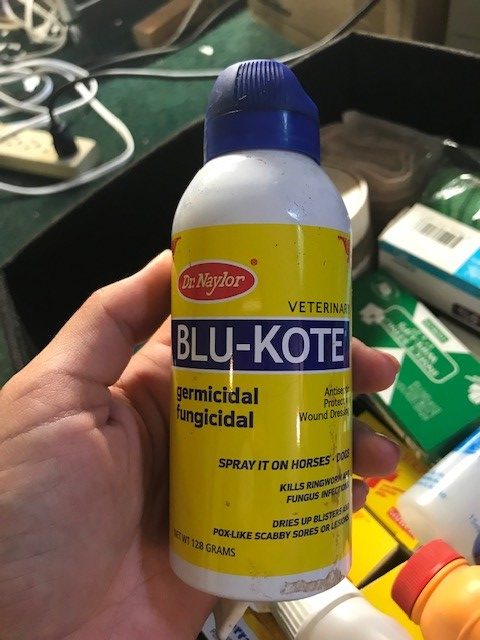
Number two most used medical item: Vetricyn
– Vetricyn is an opthalmic ointment. It’s good for if your animals get goopy eyes, nest box eye, or has any sort of eye trauma. My basic method of use is to flush the eye with saline/eye drops and then apply vetricyn, usually 2x/day. We used it on Pearl when he stuck his head in the dog kennel and got his eye bit by the coon dog. His vision is limited now, but the puncture is healed and he didn’t lose his eye. We have also used it when there is swelling or excess eye watering and it clears it right up.
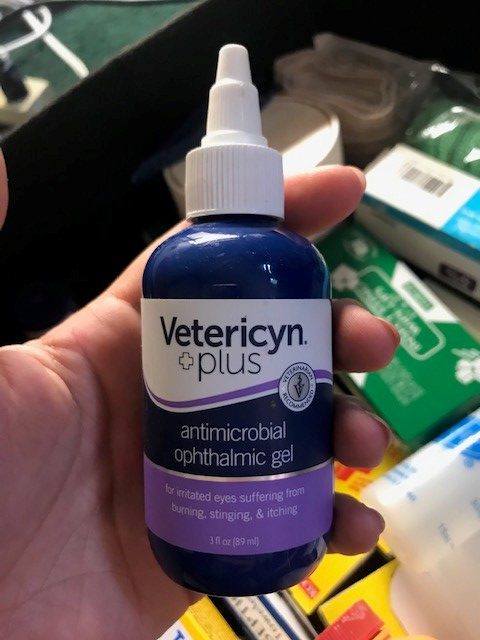
Next item that I use frequently: coconut oil
– Coconut oil has SO MANY uses. I use it topically for irritated skin and mite treatment. I feed it for bad breath, upset stomachs, and to add some good oils to the diet. I apply it to fresh ear tattoos to help them set and keep them from peeling off. I have used it for irritated body parts: eyes, genitals, etc. It’s a good go-to for most common irritations and ailments, and most animals enjoy eating/licking it. If you want to use it for medical purposes, get organic and virgin, good high quality oil, it’s worth the money.
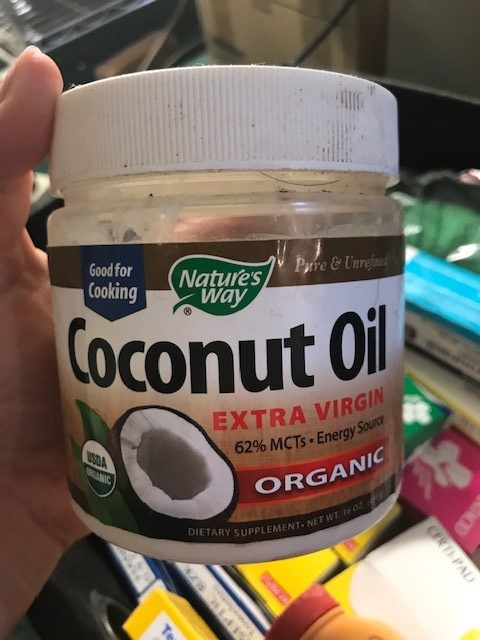
Up next: Bayer Low Dose (and Benadryl)
– These are the only two OTC human drugs that I keep for my animals. I use both primarily only for my dogs. Sometimes they find themselves in sticky situations (ie. eating wasps, tripping down the steps, etc.). Any time I use either medication, I make sure to closely monitor the dogs for any adverse reactions or signs that their ailment/condition is getting worse. Benadryl is great for allergic reactions and saves a trip to the vets for most small things like bee stings or hives. Bayer is handy for days when my older dog might have overdone it running & playing. I always make sure that I give just a small amount of Bayer (usually 1 single low-dose pill for my 70lb dog) so that he isn’t feeling 100%, which could cause him not to slow down and agitate his condition further.
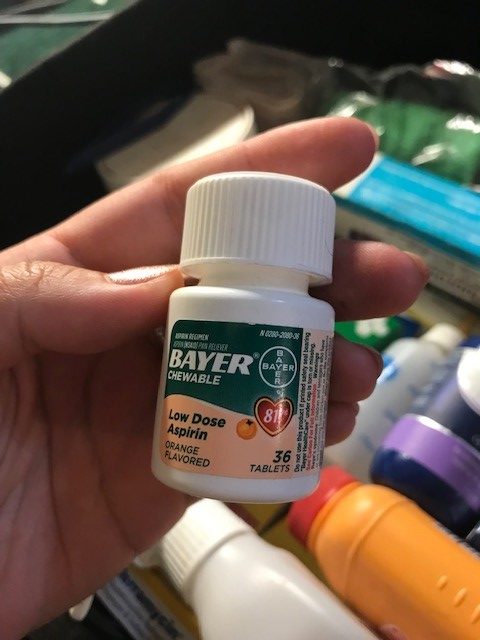
Next up on the list: Swat
– Swat is indispensable in the summer for when you’ve got an injured animal and the bugs are out. Swat can save animals from fly strike or just bad fly/bug bites. I had a chicken get injured last summer, and swat around her vent and injury saved her from the summer flies. It comes in PINK and clear. If you have outside dogs that are prone to fly bites on their ears and tail, Swat can help with that as well.
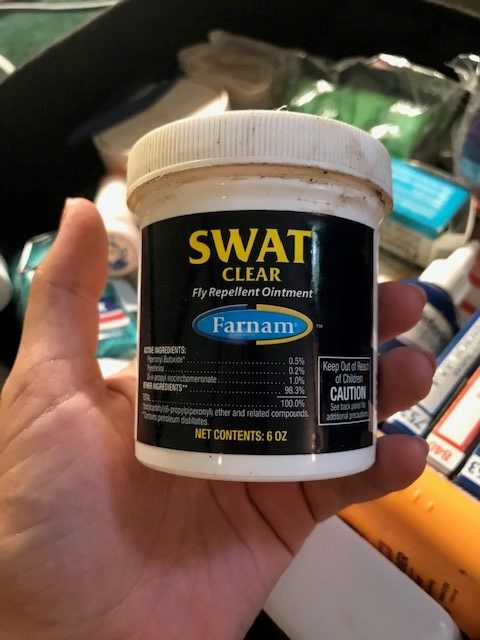
And finally:
– Terramycin: this is similar to vetricyn, however it is a bit more potent and also a bit more expensive. I save the terramycin for my rabbits as it’s a bit smaller and easier to use on the rabbits eyes.
– Food Grade Hydrogen Peroxide: I didn’t realize what I was missing until my friend Linda gave me some. I keep 35% H2O2 and use 1 drop in the 32oz water bottles of my rabbits – helps pre and post show stressors. It is also a solid cleaning agent when diluted. At this concentration, it WILL CAUSE BURNS.
– AluShield: this is basically an aerosol bandage. Typically I would use blu-kote, however if I have something like a puncture that I’ve cleaned thoroughly and flushed, I might use AluShield. AluShield is also good for protecting irritated areas that you can’t traditionally bandage.
– DMSO: DMSO is a topical agent that reduces inflammation and swelling, especially in the joints. I use the roll-on type. It works very well for days when your animals might be stiff or over exerted themselves.
Other things:
I have access to old and expired medical supplies from work, all of which I keep for emergency use, especially wipes and bandages. Iodine and alcohol wipes come in handy for wound cleaning and prepping if you need to give an injection or lance an abscess. I also always keep needles (usually 20 and 16 gauge) and syringes on hand, since you never know when you might need to drain an abscess or give an injection or medication orally. I also keep any old canine/feline prescription meds for emergency use if needed. In my fridge I have a vial of penicillin injectible so that I can treat most ailments and infections in my animals on my own.
It is important to note that I am NOT a vet. I have worked closely with both canine and equine vets over the years, from which I have gained some basic medical skills. The bottom line is that you should consult your veterinarian before using any of the above mentioned products, ESPECIALLY if you aren’t comfortable using or applying them. All of the above can be purchased at most feed stores or Tractor Supply.

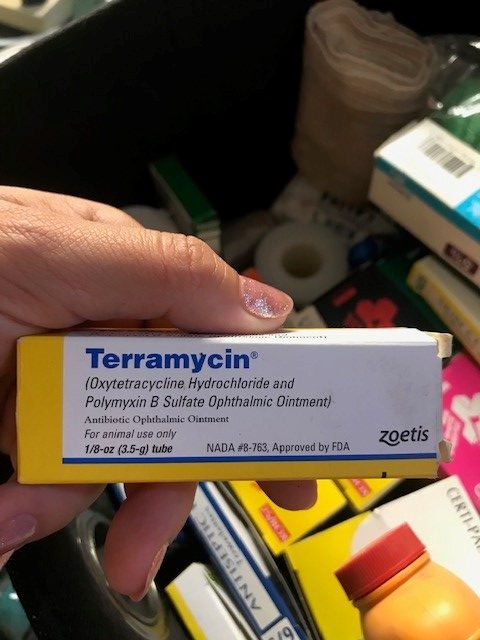
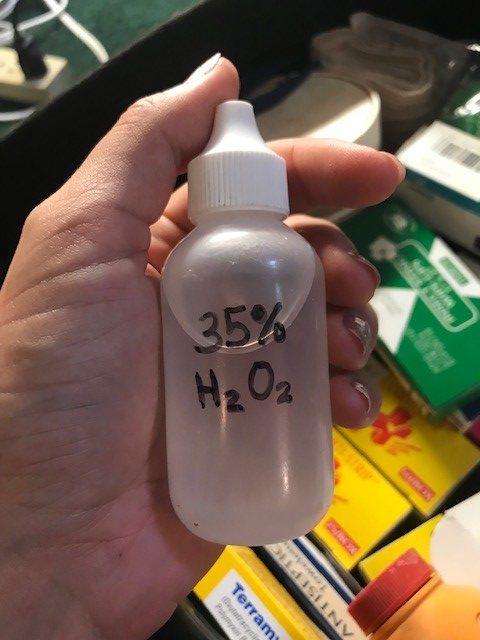
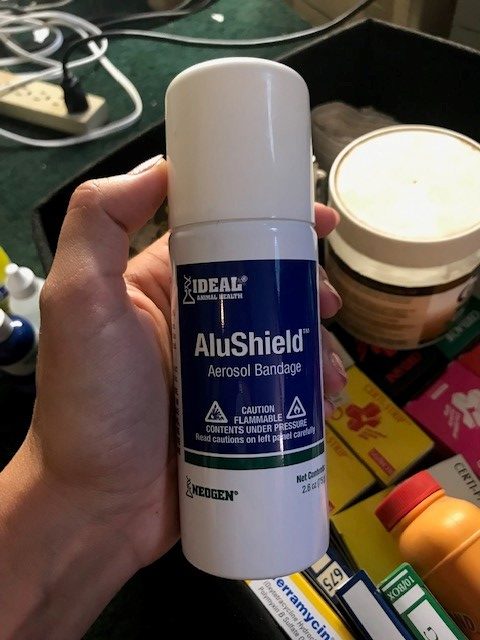
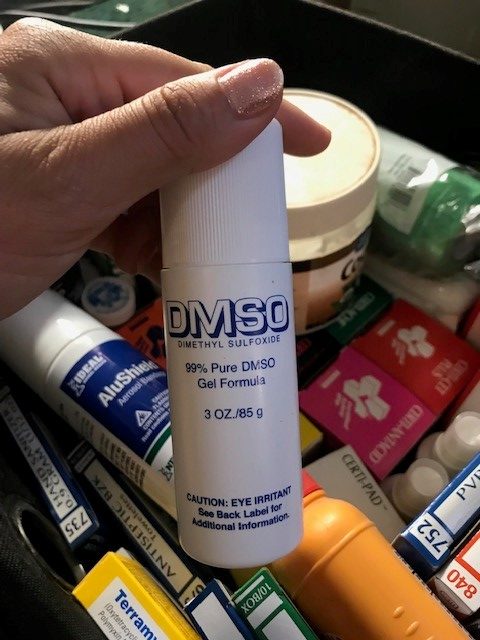
KNOWLEDGE ?♀️